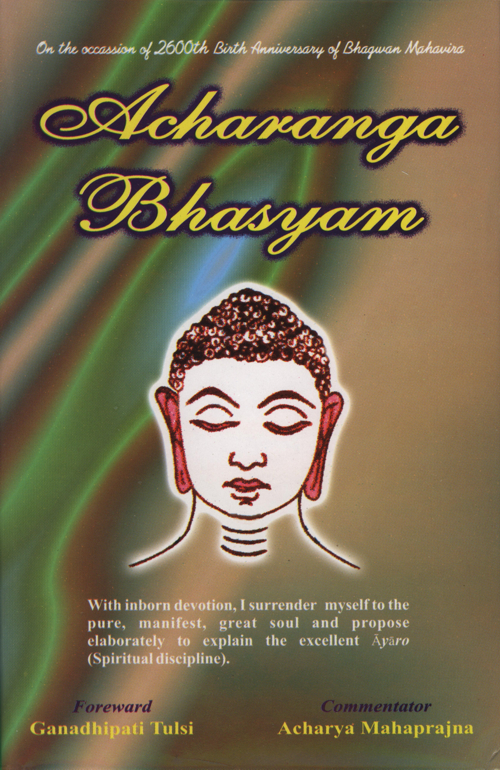5.96 saḍḍhissa ṇaṃ samaṇuṇṇassa saṃpavvayamāṇassa—samiyaṃti maṇṇamāṇassa egayā samiyā hoi. samiyaṃti maṇṇamāṇassa egayā asamiyā hoi. asamiyaṃti maṇṇamāṇassa egayā samiyā hoi. asamiyaṃti maṇṇamāṇassa egayā asamiyā hoi. samiyaṃti maṇṇamāṇassa samiyā vā, asamiyā vā, samiyā hoi uvehāe. asamiyaṃti maṇṇamāṇassa samiyā vā, asamiyā vā, asamiyā hoi uvehāe.
5.97 uvehamāṇo aṇuvehamāṇaṃ būyā (tuvehāhi samiyāe. "
5.98 iccevaṃ tattha saṃdhī jhosito bhavati.
(96-98) Whatever a faithfully, well-disposed man, on entering the order, thought to be true, that may afterwards appear to him true; what he thought to be true, that may afterwards appear to him untrue; what he thought to be untrue, that may afterwards appear to him true; what he thought to be untrue, that may afterwards appears to him untrue. What he thinks to be true, that may, on consideration, appear to him true, whether it be true or untrue. What he thinks to be untrue, that may, on consideration, appear to him untrue, whether it be true or untrue. But the monk with the balanced view should say to the monk of unbalanced view: please resort to the balanced view for perceiving the truth. In this way the juncture (right vision) should be properly put into action.
Bhāṣyaṃ Sūtra 96-98
A disciple of firm faith, who accepts as unassailable truth whatever has been propounded by the Jina is commendable; He, after having attained the qualification of a monk becomes a monk by renouncing the world.
- Sometimes the truth or the conduct that he happens to consider as true or right comes out true.
- Sometimes[1] what he considers as right comes out to be wrong.
- Sometimes what he considers to be wrong comes out to be true.
- Sometimes what he considers as wrong comes out to be wrong.
- Now these four alternatives are condensed into two:
- suppose somebody considers something as right. That may factually be right or wrong, but on account of his equanimity, that becomes right.
- Suppose somebody considers something as wrong. That may factually be right or wrong, but due to his equanimity, that becomes wrong.[2]
Here the topic under consideration are the transcendental and empirical stand-points. The transcendental stand-point concerns with the objects that are not icnowable by the senses but can be known only by higher wisdom. The empirical stand-point concerns with what can be known by the intellect. Some intelligent renunciators think about some principles as right by means of his own intellect, although (in fact), that is not right. Similarly, he considers some principles as not right, though it is right. Here the Sutra presumes identification between the transcendental and the empirical stand-points, though they are quite different. 'Unbaisedness or equanimity is the principle that establishes the identity. If the thinker is unbiased, then even though a principle is not right according to the transcendental stand-point, it is right if it is thought to be so according to the empirical stand-point. Similarly, what is right according to the transcendental stand-point can be considered wrong according to the empirical stand-point.[3]
The unbiased person should address the biased person in this way - you should cultivate unbiasedness for the purpose of realizing the truth. You should adopt the attitude of equanimity'.
In this way, for the unbiased, the juncture between the thirteen cleavages[4] of knowledge etc. due to the fruition of the view-deluding karma is realized;[5] 'juncture' means the juncture of right vision. The right vision is capable of being established only by the attitude of equanimity in respect of the different varieties of knowledge etc.
Thus a śramaṇa who practises any course of action in an unbiased way, is aptly called as the Truth-seeker. This very fact has been mentioned in the present sūtra. It is perfectly consistent with the description of the five vyavahāras (Cf. Sthānāṅga Sūtra, 5/124).
(b) Vṛttikāreṇa anekāntadṛśṭayā vyākhyātaṃ sūtramidam—(Vṛtti, patra 202-203)
(c) Jayācāreṇa asya mahatī samῑkṣā kṛtāsti - (Ācārāṅga ki joḍa, ḍhāla-42, gāthā 19-79)
(b) Ācārānga Vṛtti, patra 203: sandhiḥ karmmasantatirūpo 'jhoṣitaḥ'—kṣapito bhavati.
 Acharya Mahaprajna
Acharya Mahaprajna

